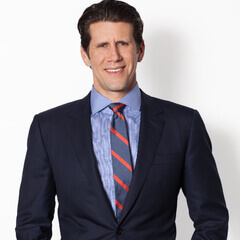In recent years, our understanding of workplace discrimination has deepened, tackling nuanced dimensions like racism and sexism. However, a recent study by the Harvard Business Review draws attention to another layer of bias, ageism, which detrimentally affects women in leadership roles in unique ways.
This blog explores the insidious nexus of ageism and gender, providing insights into proactive measures that can be taken against it. By working with an experienced age discrimination attorney, you can protect your rights, livelihood, and reputation.
The Age-Gender Bias in Leadership
The study delineated three primary categories in which women leaders experienced age-related discrimination, irrespective of the age spectrum they belonged to.
1. Gendered “Oldism”
Women advancing in age often confront a waning regard for their professional capabilities, while their male counterparts continue to be celebrated. The study highlighted instances where older women, despite their vast experience, were sidelined in favor of younger male colleagues. This bias not only limits their potential for growth but also propagates an environment where experience isn’t equitably valued.
2. Gendered “Youngism”
Younger women leaders face a set of challenges grounded in belittlement and assumptions about their professional capabilities. They are often misperceived as lower-ranking employees, particularly if they belong to non-White communities. Constantly having to prove their credentials, they grapple with an environment that questions their credibility based on age and appearance.
3. Gendered “Middle-ageism”
Contrary to popular belief, middle-aged women aren’t immune to age-related biases. Societal stereotypes around familial responsibilities and health become professional barriers, often shutting doors to opportunities. The Harvard Business Review study emphasized that age-related prejudices seem to suggest women either lack leadership maturity when younger or age out of their prime too rapidly.
Challenging Gendered Ageism
Drawing on the study’s findings, employers can adopt concrete steps to mitigate gendered ageism:
- Recognize age bias – Acknowledging the existence of a problem is the first step towards addressing it. Ageism awareness, especially in tandem with gender bias, needs to be integral to workplace diversity, equity, and inclusion initiatives. Regular training can help in debunking ageist stereotypes.
- Address “lookism” – Aesthetic biases play a significant role in gendered ageism. Organizations must rigorously examine their evaluation criteria to ensure they aren’t inadvertently favoring or disfavoring individuals based on appearance.
- Emphasize skills over stereotypes – Focusing on individual capabilities rather than age-driven assumptions should be the gold standard for decisions related to hiring, promotions, or team allocations.
- Cultivate cross-generational collaborations – Promoting mixed-age, mixed-gender teams can catalyze a more inclusive, collaborative, and enriching work environment.
Take A Stand Against Ageism in the C-Suite
If you believe you’ve been impacted by ageism and gender bias, you need an advocate and an ally. Our firm is dedicated to protecting women in leadership positions against all forms of discrimination. With an impressive track record of success in administrative, arbitration, and court proceedings, we’re equipped to assist you. Let’s dismantle the barriers of ageism and create a more fair and inclusive workplace. Reach out today!


